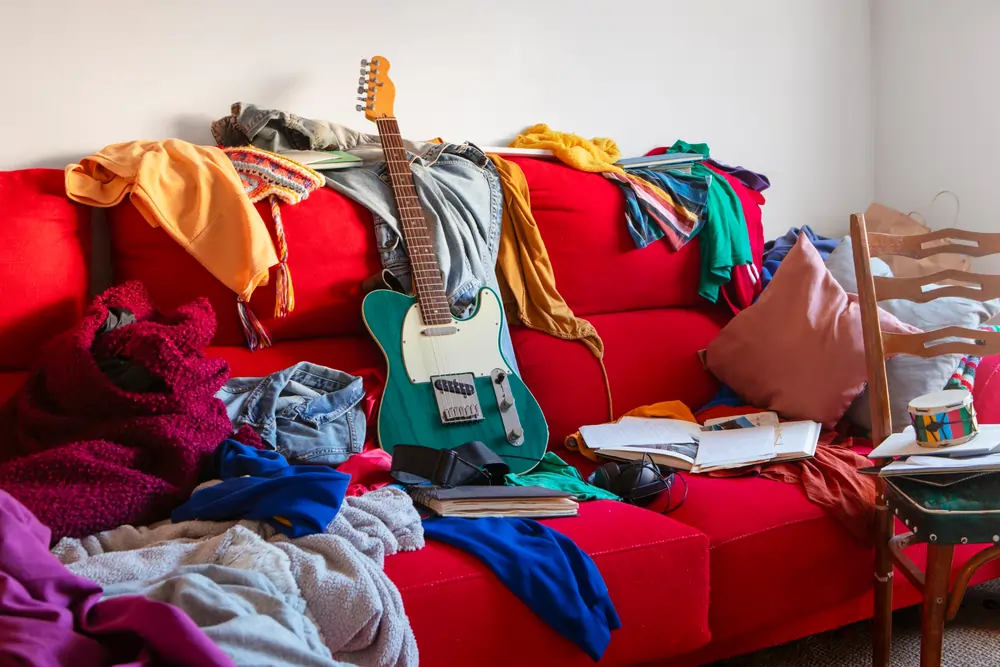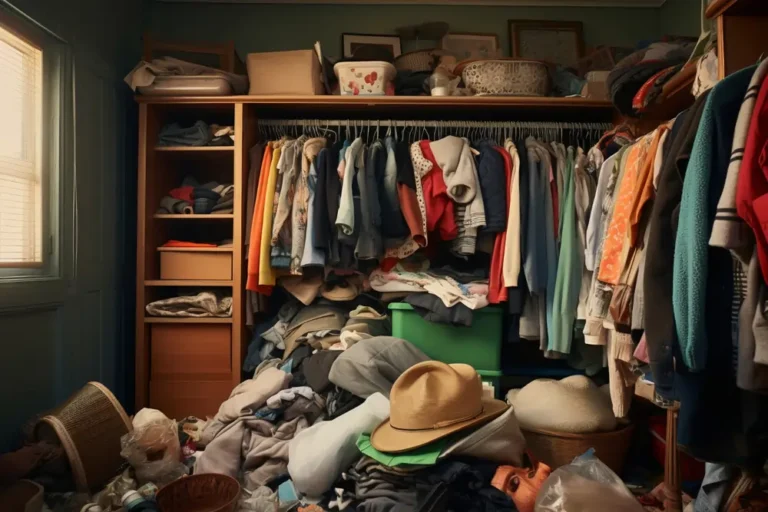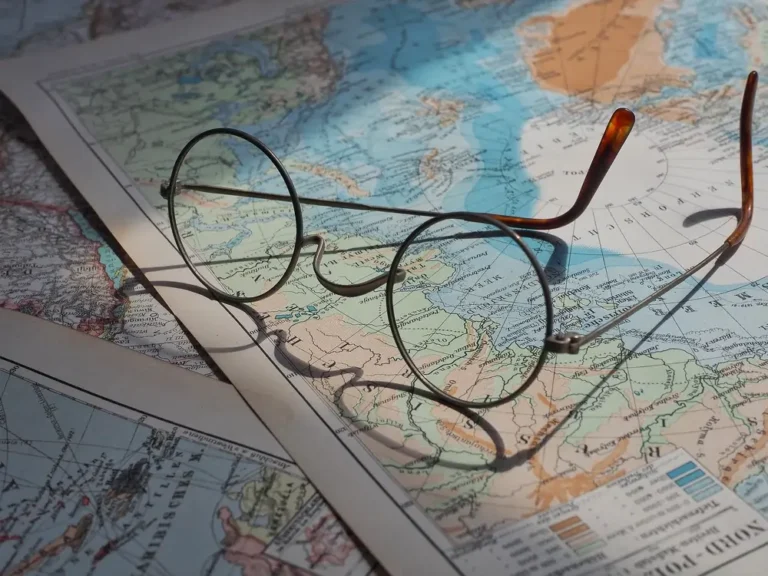Are you drowning in a sea of stuff? Does the thought of parting with your possessions make you anxious? You’re not alone. Hoarding disorder affects millions, turning homes into mazes of clutter. But there’s hope. This guide offers practical decluttering tips for hoarders, helping you break free from the overwhelming cycle of accumulation.
Decluttering Tips for Hoarders
Is clutter taking over your life? If you’re struggling with hoarding, you’re not alone. According to studies, around 2-6% of the population experiences hoarding disorder, and it can be overwhelming to know where to start. But here’s the good news: with the right decluttering tips and strategies, you can take back your space and reduce the anxiety that comes with hoarding. Whether you or someone you love is affected by this, these practical steps will guide you through decluttering in a compassionate, realistic way!
Understanding Hoarding: What It Is and Why It Happens
Hoarding disorder is more than just having a messy home. It’s a complex mental health condition characterized by:
- Difficulty discarding possessions, regardless of value
- Intense distress at the thought of getting rid of items
- Accumulation of objects that clutter living spaces
The line between clutter vs hoarding can be blurry. While many of us have cluttered areas, hoarders find their living spaces significantly impaired by the sheer volume of possessions.
Emotional attachment to clutter often drives hoarding behavior. Fear of waste, anxiety about forgetting memories, and a sense of security from possessions all play a role. Understanding these hoarding tendencies is the first step toward change.
How to Mentally Prepare for Decluttering as a Hoarder
 Hoarding problem got you down? It’s time to declutter your home and take control! One of the best decluttering tips is to start with one room at a time. We’ve got 8 decluttering tips to tackle the whole house. When it comes to hoarding, it’s crucial to focus on getting rid of things you don’t need.
Hoarding problem got you down? It’s time to declutter your home and take control! One of the best decluttering tips is to start with one room at a time. We’ve got 8 decluttering tips to tackle the whole house. When it comes to hoarding, it’s crucial to focus on getting rid of things you don’t need.
If you’re a hoarder, you’ll likely struggle with the term “hoarder,” but you’ve come to the right place for tips to help. Remember, hoarding takes time to overcome, but you’ve got this! Start by letting go of grandma’s old knick-knacks and other rubbish that’s going unused.
When you try to declutter, think minimalist and focus on things you don’t need “just in case.” Tips on decluttering can help you declutter effectively. If someone close to you has a problem with hoarding, share these ways to declutter with them. You’ve taken the first step, and now you’re ready to be able to declutter the clutter in your home!
Decluttering isn’t just about tidying up—it’s an emotional journey. Mental preparation for decluttering is crucial for success. Here’s how to start:
- Acknowledge your feelings: It’s normal to feel anxious or overwhelmed.
- Set small, achievable goals: Don’t aim to declutter your entire home in one go.
- Practice self-compassion: Be kind to yourself throughout the process.
Remember, overcoming hoarding is a marathon, not a sprint. Each small step is a victory.
Start Small: Tackle One Area at a Time
Feeling overwhelmed by all the stuff piled up around you? Start small and tackle one area at a time. If your dresser is overflowing, focus on that first. Use a timer to make the work of sorting more manageable. Getting rid of clutter can make your space clutter free and your mind clearer.
If you have a tendency to hoard, it’s okay to go easy on yourself. A hoarder may feel the need to hoard due to various reasons behind it, like a compulsive disorder or mental disorder. Find support if you need it. Minimalism doesn’t mean you have to get rid of everything; just make sure you’re not hoarding clothes or kitchen appliances you never use.
One of the easiest way to combat the term “hoarder” is to make manageable tasks out of it. Instead of buying new things just in case you might need them, focus on what you already have. Hold on to things that are truly useful and let go of the rest. This’ll help in decluttered your day-to-day life and reduce health concerns.
The key to how to start decluttering is to begin with a single, manageable area. Here’s a step-by-step approach:
- Choose a small space: Start with a drawer or a corner of a room.
- Set a timer: Work in 15-30 minute sessions to avoid burnout.
- Sort items into four categories: keep, donate, discard, recycle.
This method helps build momentum and confidence. As you see progress, you’ll be motivated to continue.
The Four-Box Method: A Simple Decluttering Strategy
 Ever feel like you’re turning into a hoarder with too much stuff? The Four-Box Method is a lifesaver! It’s perfect for those who hold onto things just in case. You know, when you buy something and think, “I might need this later.” That’s how collecting things usually comes about.
Ever feel like you’re turning into a hoarder with too much stuff? The Four-Box Method is a lifesaver! It’s perfect for those who hold onto things just in case. You know, when you buy something and think, “I might need this later.” That’s how collecting things usually comes about.
With this method, you sort your stuff into four boxes: Keep, Donate, Trash, and Relocate. It helps reduce the number of items you have and ensures nothing falls into the wrong hands. So next time you’re drowning in clutter, find advice in the Four-Box Method and stop keeping things in case you might need them!
The four-box decluttering method is a powerful tool for hoarders. Here’s how it works:
- Label four boxes: Keep, Donate, Trash, and Relocate.
- Sort every item into one of these boxes.
- Process each box according to its label.
This method provides structure and clarity, making decisions easier. It’s a cornerstone of how to declutter with hoarding disorder.
Dealing with Sentimental Items: Letting Go with Love
Sentimental items often pose the biggest challenge when decluttering sentimental items. Try these strategies:
- Take photos of cherished objects before letting them go.
- Create a “memory box” for a limited number of special keepsakes.
- Share items with family members who might appreciate them.
Remember, memories live in your heart, not in objects. Letting go doesn’t mean forgetting.
Seek Professional Help: When to Involve a Therapist or Professional Organizer
Feeling overwhelmed with your stuff? Sometimes, it’s not just clutter, it might be a sign you’re a hoarder. If you’re keeping things “just in case” and it’s taking over your space, it’ll help to seek professional help.
Whether it’s a therapist or a professional organizer, involving an expert can make a world of difference.
Sometimes, professional decluttering services or therapy can make all the difference. Consider seeking help if:
- You feel overwhelmed by the decluttering process.
- Anxiety or depression are interfering with your progress.
- You need accountability to stay on track.
Hoarding therapy, particularly cognitive behavioral therapy, can address root causes. Professional organizers specializing in hoarding situations can provide hands-on assistance.
Decluttering Isn’t a One-Time Task: How to Maintain a Clutter-Free Space
 Maintaining a clutter-free home requires ongoing effort. Here are some tips:
Maintaining a clutter-free home requires ongoing effort. Here are some tips:
- Develop daily habits: Spend 5-10 minutes tidying each day.
- Use organizing systems: Shelving, clear bins, and labels can help maintain order.
- Regular check-ins: Schedule monthly decluttering sessions to prevent buildup.
Remember, breaking hoarding habits is a process. Be patient with yourself as you develop new routines.
Practical Steps to Declutter a Hoarder’s House
- Start with trash: Begin by removing obvious garbage.
- Clear pathways: Ensure safe movement through your home.
- Tackle one category at a time: For example, focus on clothes, then books.
- Use the “one in, one out” rule: For every new item, remove an old one.
- Donate vs keeping: Consider if someone else could benefit from items you rarely use.
Dealing with Clutter Anxiety
Clutter anxiety can paralyze progress. Try these coping strategies:
- Practice deep breathing when feeling overwhelmed.
- Visualize your ideal living space for motivation.
- Celebrate small wins to boost confidence.
Remember, anxiety over throwing things away is normal. It gets easier with practice.
Family Support for Hoarders
Family support can be crucial in overcoming hoarding. Here’s how loved ones can help:
- Offer non-judgmental support
- Assist with sorting and decision-making
- Provide encouragement and celebrate progress
Compassionate decluttering involves understanding and patience from all involved.
Hoarding Help Resources
Don’t go it alone. Utilize these resources:
- Local support groups for face-to-face connections
- Online communities for 24/7 support
- Professional organizers specializing in hoarding situations
- Therapists trained in hoarding disorder treatment
Remember, seeking help is a sign of strength, not weakness.
Setting Decluttering Goals
Setting decluttering goals keeps you focused and motivated:
- Start small: Aim to clear one surface or drawer per week.
- Use SMART goals: Specific, Measurable, Achievable, Relevant, Time-bound.
- Track progress: Keep a decluttering journal or take before-and-after photos.
Celebrating each milestone, no matter how small, reinforces positive change.
Strategies for Hoarders to Declutter
- Use the 90/90 rule: If you haven’t used an item in 90 days and won’t in the next 90, let it go.
- Try the hanger trick for clothes: Reverse all hangers, then turn them back after wearing. Donate unworn items after a set period.
- Practice the one-minute rule: If a task takes less than a minute, do it immediately.
These strategies help manage hoarding disorder by making decluttering decisions more straightforward.
Clearing Out Hoarder Homes: When Professional Help is Needed
Sometimes, hoarding cleanup services are necessary, especially in severe cases. These services offer:
- Expert decluttering assistance
- Safe removal of hazardous materials
- Deep cleaning and sanitization
Professional help can jumpstart the decluttering process, making it less overwhelming.
Mental Health and Hoarding
Hoarding and depression often go hand-in-hand. Addressing mental health is crucial for long-term success. Consider:
- Therapy to address underlying issues
- Medication, if recommended by a healthcare professional
- Lifestyle changes like exercise and improved nutrition
Remember, taking care of your mental health supports your decluttering efforts.
Maintaining a Clutter-Free Lifestyle
Achieving a clutter-free lifestyle requires ongoing effort:
- Implement a one-in, one-out policy for new purchases
- Regularly reassess your possessions
- Create designated spaces for everything you own
These habits help prevent relapse and maintain your hard-won progress.
Conclusion
Decluttering for hoarders isn’t just about clearing out a physical space—it’s about regaining peace of mind and creating a home that feels safe and comfortable. The process may be emotional and challenging, but with small steps and the right strategies, you can make lasting progress. Remember, it’s okay to ask for help from professionals or support groups when you need it. Start small, and celebrate every victory, no matter how small it seems!
Remember, change is possible. Each item you let go of is a step toward freedom. With patience, persistence, and the right strategies, you can create the peaceful, organized home you deserve.
Are you ready to take the first step? Start small, be kind to yourself, and keep moving forward. Your clutter-free future awaits.



